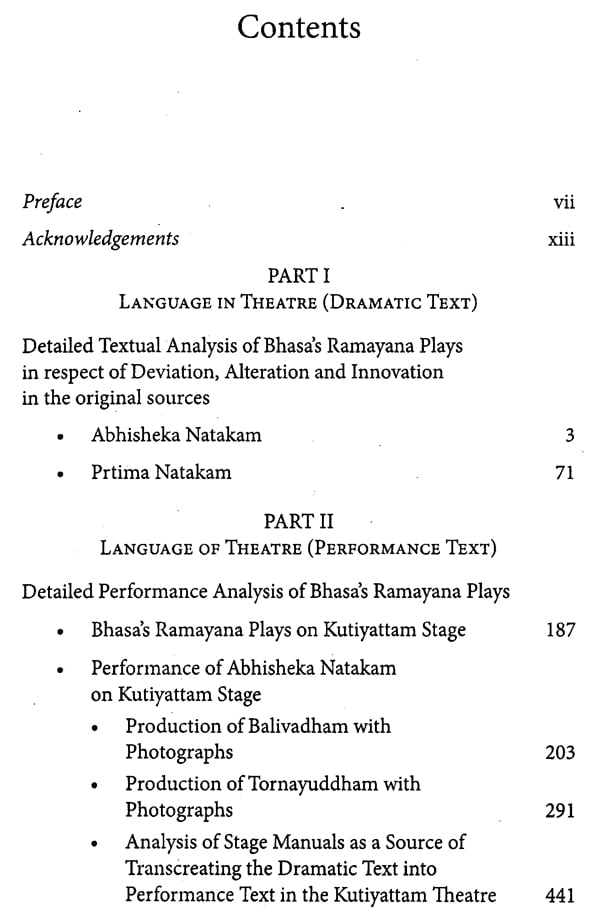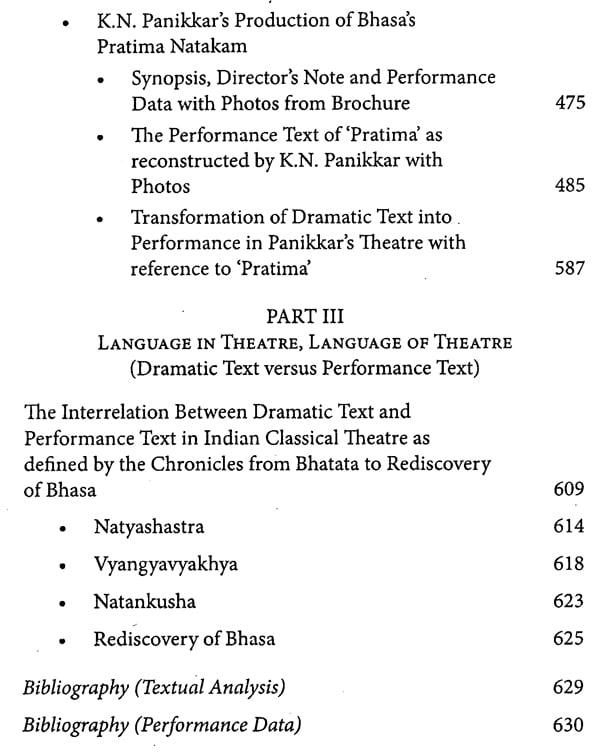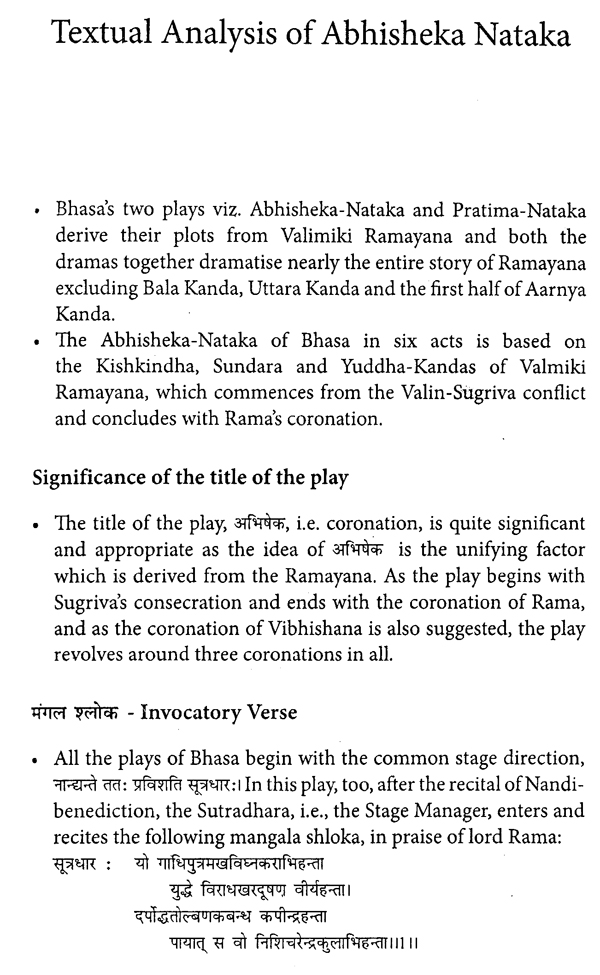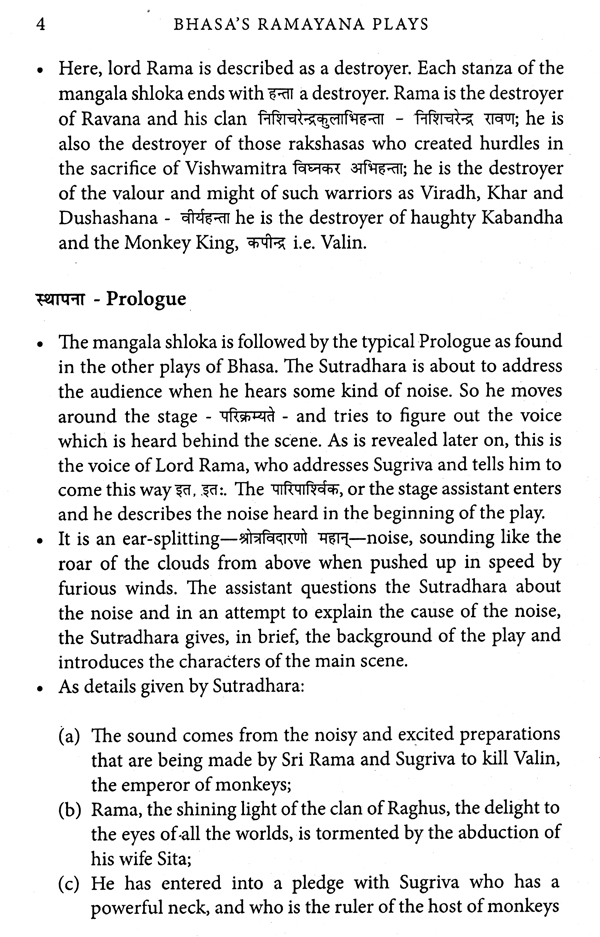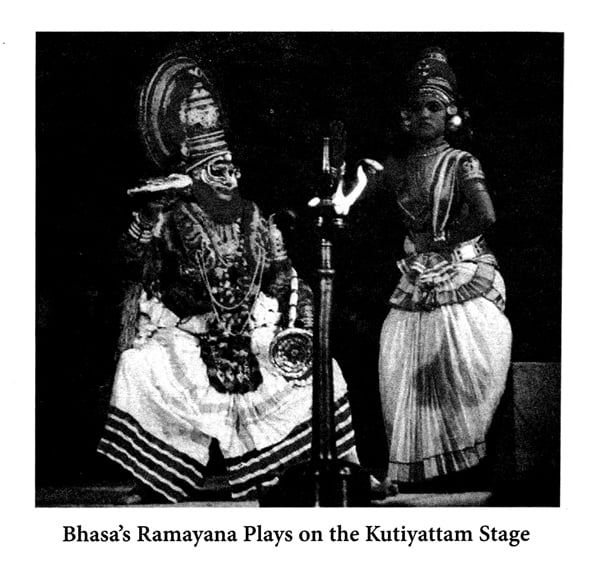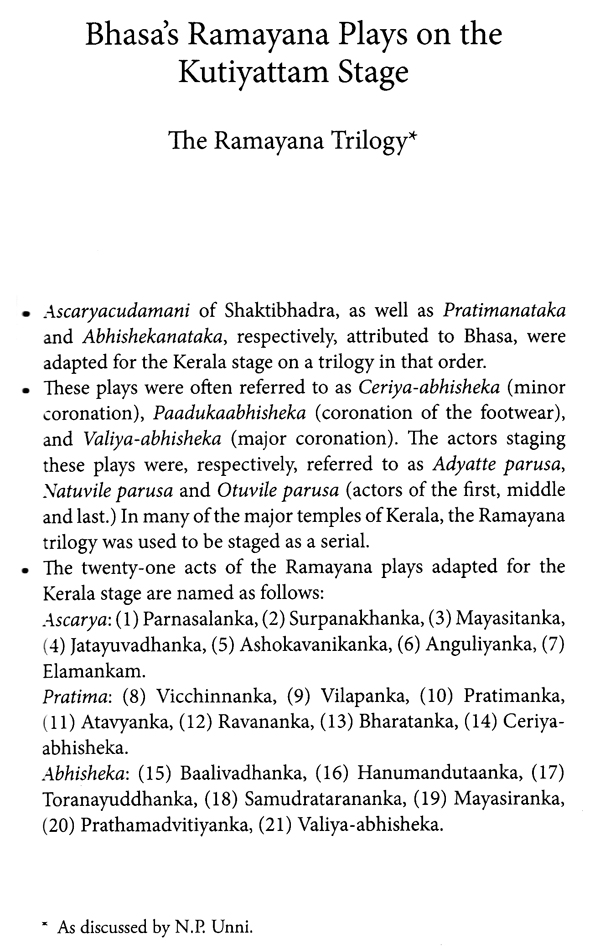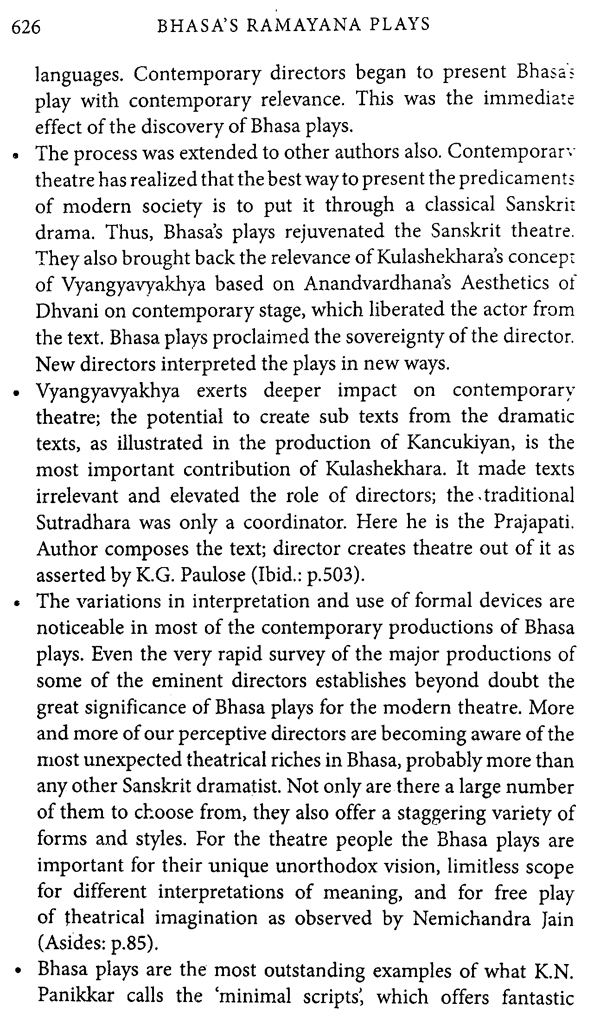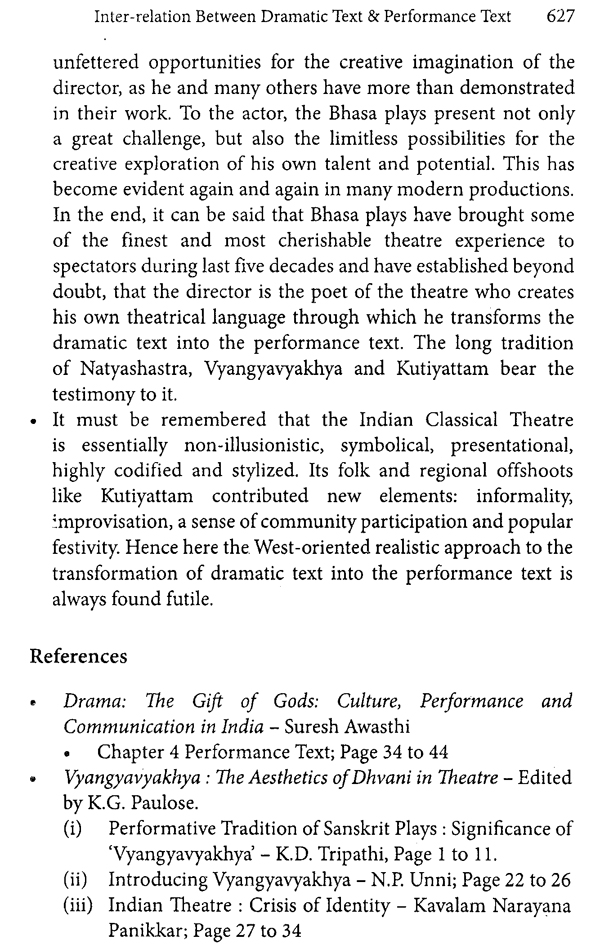About the Book Drama is a distinct form of literature which is meant for performance. Unlike poetry and novel, its true value lies in its stagebility. On the evidence of 2500 years of dramatic theory and practice in both East and the West it is reasonable to conclude that plays need not be considered as either performable texts or scriptable performances. They can be and usually are, both. The best play is designed for the page as well as for the stage as is evident from the works of great dramatists like Shakespeare in the West and Bhasa/Kalidasa in the East. Hence the present volume involves the analysis of the Ramayana plays ascribed to Bhasa namely, Abhisheka Natakam and Pratima Natakam both in terms of Language in Theatre i.e. Dramatic Text composed by the playwright and Language of Theatre i.e. Performance Text designed by the director for the production of the play and tries to establish the inter relation between both of them. The main focus is on the detailed textual analysis of these two plays and the performance analysis of Balivadham and Toranayuddham, the two acts of Abhisheka Natakam in Kutiyattam tradition and K. N. Panikkar's pathbreaking production of Pratima Natakam. How the dramatic text is transformed into the performance text is shown here for establishing the relation between text and performance.
About the Author Dr. Mahesh Champaklal Professor Emeritus and former Head, Deptt. Of Dramatics and also Ex-Dean, Faculty of Performing Arts, The Maharaja Sayajirao University of Baroda. Was associated with the Professional Gujarati Theatre in Mumbai from 1973 to 1981. Actively contributed and participated in Experimental Theatre of Gujarat as writer, actor and director from 1982 onwards. Conferred upon Gaurav Puraskar by Gujarat State Sangeet Natak Akademi, and felicitated with Best Translation Award by Sahitya Akademi, New Delhi and Gujarat Sahitya Akademi, Gandhinagar for the Gujarati Translation of Girish Karnard's 'The Fire and the Rain'. Researched, authored and published four books in Gujarati on Bharata's Natyasastra and three books in Gujarati on theatre criticism which were acknowledged and awarded by Gujarati Sahitya Parishad and Gujarat Sahitya Akademi. Honored with fellowship at the Indian Institute of Advanced Study-IIAS, Shimla in 2014 for the project entitled, 'Language in Theatre, Language of Theatre-Dramatic Text versus Performance Text in the context of Bhasa's Ramayana Plays: An Analytical and Comparative Study' on which the present volume is based.
Preface Language in Theatre, Language of Theatre 587 Drama is a distinct form of literature which is meant for performance. Unlike poetry and novel, its true value lies in its stagebility. Some theorists view the text others the performance as a play's ultimate reality. In both camps, however, there tends to be sufficient willingness to heed both the literary and the theatrical dimensions of drama. Even the most devout believers in drama as literature hardly ever deny that the potential for being performed sets plays apart from other kinds of literary works. Conversely, even the most fervent proponents of the view that the `playscript is a mere recipe for a more or less delicious production stop short of suggesting that the assignment of readings in a drama course is like the serving up of loose leaves from a cook book at the dinner table. [Dramatic Theory - Cambridge Guide to the Theatre: Martin Baham Leeds, (1983)]
On the evidence of 2500 years of dramatic theory and practice in both East and the West it is reasonable to conclude that plays need not be considered as either performable texts or scriptable performances. They can be and usually are, both. The best play is 630 designed for the page as well as for the stage as is evident from the works of great dramatists like Shakespeare in the West and Bhasa / Kalidasa in the East.
Hence the present study involves the analysis of Bhasa's Ramayana Plays both in terms of Language in Theatre i.e. Dramatic Text composed by the playwright and Language of Theatre i.e. Performance Text designed by the Director for the production of the play.
Book's Contents and Sample Pages
